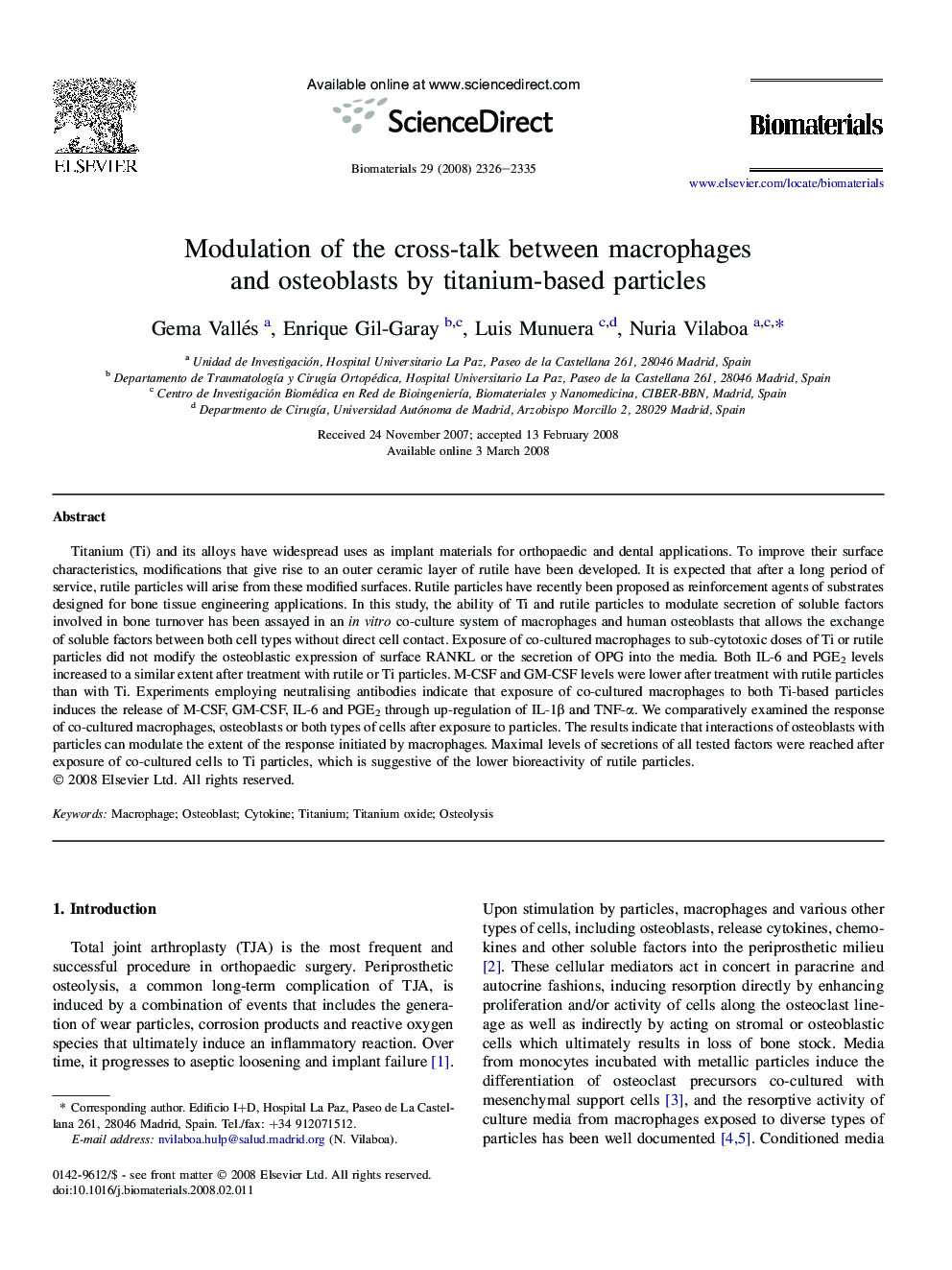| Article ID | Journal | Published Year | Pages | File Type |
|---|---|---|---|---|
| 10121 | Biomaterials | 2008 | 10 Pages |
Titanium (Ti) and its alloys have widespread uses as implant materials for orthopaedic and dental applications. To improve their surface characteristics, modifications that give rise to an outer ceramic layer of rutile have been developed. It is expected that after a long period of service, rutile particles will arise from these modified surfaces. Rutile particles have recently been proposed as reinforcement agents of substrates designed for bone tissue engineering applications. In this study, the ability of Ti and rutile particles to modulate secretion of soluble factors involved in bone turnover has been assayed in an in vitro co-culture system of macrophages and human osteoblasts that allows the exchange of soluble factors between both cell types without direct cell contact. Exposure of co-cultured macrophages to sub-cytotoxic doses of Ti or rutile particles did not modify the osteoblastic expression of surface RANKL or the secretion of OPG into the media. Both IL-6 and PGE2 levels increased to a similar extent after treatment with rutile or Ti particles. M-CSF and GM-CSF levels were lower after treatment with rutile particles than with Ti. Experiments employing neutralising antibodies indicate that exposure of co-cultured macrophages to both Ti-based particles induces the release of M-CSF, GM-CSF, IL-6 and PGE2 through up-regulation of IL-1β and TNF-α. We comparatively examined the response of co-cultured macrophages, osteoblasts or both types of cells after exposure to particles. The results indicate that interactions of osteoblasts with particles can modulate the extent of the response initiated by macrophages. Maximal levels of secretions of all tested factors were reached after exposure of co-cultured cells to Ti particles, which is suggestive of the lower bioreactivity of rutile particles.
